
When learners with autism have deep, consuming fascinations — trains, triangles, basketballs, whales — teachers often wonder what to do. This concise, highly practical guidebook gives educators across grade levels a powerful new way to think about students’ “obsessions” — as positive teaching tools that calm, motivate, and improve learning. Written by top autism experts and nationally renowned speakers Kluth and Schwarz, this guide is full of easy tips and strategies for folding students’ special interests, strengths, and areas of expertise into classroom lessons and routines.
Book lists this appears on
Themed Booklist
In the Classroom: Teaching Children on the Autism Spectrum
Other books by this author

An an essential “literacy meets autism” primer for general educators and reading specialists, this book provides the know-how for bringing quality, meaningful literacy instruction to students with autism in grades K-12. Teachers will learn research-based practices in reading and writing instruction; ideas for planning lessons, differentiating instruction, and designing a classroom environment that promotes literacy learning while addressing the individual needs of learners with autism; techniques for assessing students who cannot show their literacy learning in traditional ways due to communication or learning differences; and much more from the authors’ own extensive classroom experience.
A Land We Can Share: Teaching Literacy to Students with Autism
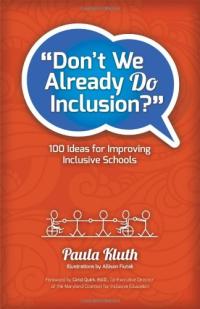
Are you trying to grow the inclusive schooling model in your community? Do you feel like you have tried everything to create change in your school? Do you want to sharpen the saw and become reenergized as an advocate or educator? The activities, examples, and illustrations in the book are designed to help participants refine their vision and their skills when it comes to inclusion. The ideas are free or low cost, and many can be achieved by any number of stakeholders including students and families.
Don’t We Already Do Inclusion?: 100 Ideas for Improving Inclusive Schools
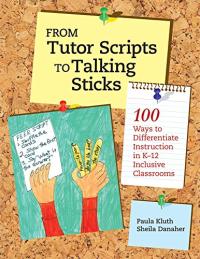
These ready-to-use, research-based adaptations enhance motivation and improve achievement for all children — including English-language learners and students with autism, emotional disabilities, cognitive disabilities, learning disabilities and other special needs. Includes easy adaptations in 10 key areas: organization; environment and sensory; technology; communication and participation; behavior and motivation; teaching and learning; literacy; math; study and review; and assessment
From Tutor Scripts to Talking Sticks: 100 Ways to Differentiate Instruction in K-12 Inclusive Classrooms
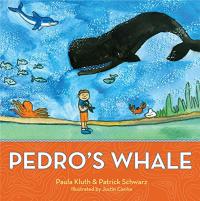
Pedro, a young boy who loves whales more than anything, is heartbroken when he’s told to put away his favorite toy whale on the first day of school. But then Pedro’s teacher discovers the secret to helping him do his best work: not only giving him his whale, but also incorporating his special interest into the whole curriculum. Soon, Pedro’s whale is helping all the children learn, as the teacher works whales into math lessons, storytime, simple science experiments, and more! Pedro’s whale helps him make friends, too, as the other children start to share his special interest.
Pedro’s Whale
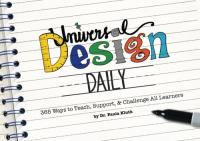
This user-friendly guide was created to help educators learn more about universal design by exploring the practices associated with it. The book features dozens of ideas for providing multiple methods of engagement (e.g., creating personalized learning plans, using collaborative activities, engaging in community building), multiple methods of action and expression (e.g., providing assessment choices, encouraging dialogue, introducing assistive technology), and multiple methods of representation (e.g., teaching with powerful visuals, trying new presentation software, using more than one mode of output during a lecture).
Universal Design Daily: 365 Ways to Teach, Support & Challenge All Learners
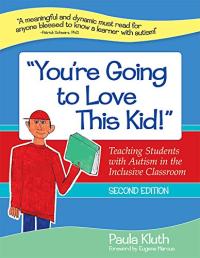
Find fresh ways to welcome and teach students with autism. The book includes forms, checklists, and planning tools that make it easy for teachers to implement the suggested strategies; photos of curricular adaptations, sensory supports, and classroom scenes; and tips on improving literacy, implementing positive behavior support, and collaborating effectively with families. This updated edition also includes information on fostering friendships, building communication skills, planning challenging and multidimensional lessons, and adapting the curriculum and the physical environment.
